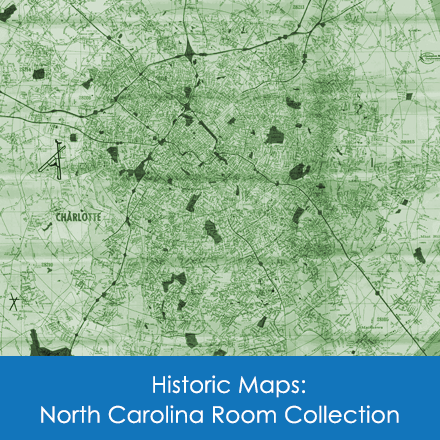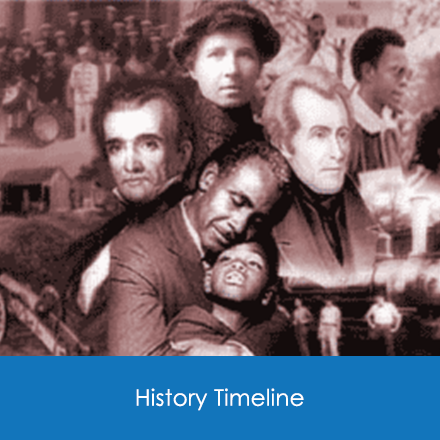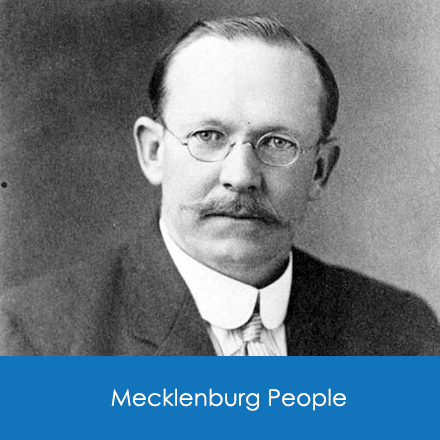You are here
Death at Cowan's Ford
HIS LORDSHIP'S venturing into North Carolina had been disastrous. The carefully thought out southern campaign upon which he had embarked so hopefully was shattered never to be reshaped. The backbone of the British offensive against the South was broken.
Cornwallis had envisioned a three-pronged drive northward to overpower what he considered would be feeble resistance in North Carolina. He had ordered the capture of Wilmington, to be held as a port city through which he could receive supplies and also as a right wing protection of his own forces in their drive toward Charlotte and on to Hillsboro. And to the west he had dispatched Ferguson from Ninety-Six to move northwestward to enlist Tory supporters and subdue rebels. Cleared of resistance on the wings and in the rear, his Lordship would sweep through North Carolina and roll on into Virginia to end all American resistance to His Majesty's government.
That had been Cornwallis' plan. But now, hardly more than five weeks after he had left Camden, his grand strategy was a shambles. The capture of Wilmington would come too late to help Cornwallis. To the west Patrick Ferguson was dead and buried at Kings Mountain and his forces, regulars and Tories, were dead, wounded or captured. And in the center his Lordship, chagrined, fearful, bitter, was running southward in disorganized retreat.
The correspondent of the Pennsylvania Packet in a subsequent analysis summarized the Redcoats' ill-fated two weeks in Charlotte:
Whilst the enemy lay at Charlotte they were confined within their lines by our riflemen, who nabbed them if they set out their heads. In short, his lordship never found himself so far from home as at that place; and it may appear strange that although we were more than two weeks in surprizing distance with our raw militia, yet the enemy never attempted it, owing, I suppose to the great attention of our commander in preventing them from obtaining intelligence, and moving his troops every night.
The British had left Charlotte in virtual panic; in their rush to leave the camp at Barnett's mill they had abandoned some twenty wagons, a large quantity of clothing, many tents and other equipment, and a number of guns. They had heard that General Davidson had some 5,000 soldiers and was pursuing them; actually the brigadier general had hardly more than 300 men, but Davie with a part of Davidson's cavalry was harassing the fleeing Redcoats and the number of their pursuers must have seemed frightfully large.
General Davidson wanted to attack Cornwallis, particularly after a heavy rain had swollen the Catawba with Tarleton's Tory forces on the west side and Cornwallis' not yet across. He sent a message to Sumner suggesting that they join in an assault on the British, but the rain slowed Sumner and Cornwallis outdistanced his pursuers and withdrew to Winnsboro, where seventy miles south of Mecklenburg's pestiferous hornets he established headquarters.
The battle of Kings Mountain had electrified American hopes, which after Camden had been at perhaps the lowest point since the Revolution's beginning. In the Salisbury district General Davidson was busy enlisting men to take the places of those whose terms of service had expired. By the middle of November, the deeply concerned Colonel Davie wrote General Smallwood, "The torments of the damned are scarcely equal to the torture of my feelings these five or six days past, from the rage of the militia for returning home. Most of them deserted before the last evening."
But down in South Carolina General Sumner added to the confidence of the Americans in the Carolinas by a victory over Tarleton at Blackstock's plantation, though in doing so he was himself severely wounded. General Davidson in writing his congratulations expressed deep concern:
My anxiety for you (least your Wound be fatal) is such that I have scarcely spirit to congratulate you on your glorious victory. I sincerely wish you a speedy recovery, and in the meantime regret the Want of your services in the field, at this critical and important Juncture. Gen'l Gates with the Continental Troops will be at Charlotte tomorrow. We lie at the old post a dead weight on the Publick. I think I am possessed of all the patience necessary to my profession but I assure you it is nearly exhausted. . . .
In the last week of November General Gates brought what was euphemistically called the southern army into Charlotte. On December 2 General Nathanael Greene took command of this force, numbering, according to a field return made just before the march to Charlotte, more than 1,100 militiamen and upward of a thousand Continentals, with some 400 under command of Morgan. But it was what Greene aptly termed "only the shadow of an army." Several hundred of them had no arms and were almost without clothing in the dead of this winter of 1780, and half of the entire force were untrained militiamen. Too, the fighting in the vicinity of Charlotte had used up all the supplies in that region. Greene decided to leave Charlotte. But before he could get his army moving, heavy rains set in and kept his troops from marching. It was December 20 when he divided his forces and went with one group to the Cheraw region on the Pee Dee in South Carolina, where he made camp the day after Christmas. The other group was sent toward Ninety-Six under Daniel Morgan.
Cornwallis, too, was on the move. He sent Tarleton to meet Morgan; they clashed at Cowpens on January 17 and Morgan gave the British cavalry a resounding defeat.
Now Cornwallis, smarting at this new setback started in determined pursuit of Morgan, who began retreating toward Mecklenburg. As Morgan kept safely ahead of the British commander, General Greene at Cheraw ordered his force under Huger to march northward toward Salisbury and he himself rode northwestward toward Charlotte to join Morgan, who had written him that a continuing ailment in his hip would make necessary his taking a leave of absence from his command. "I am not unacquainted with the hurt my retiring will be to the service, as the people have so much dependence in me," he wrote Greene; "but the love I have for my country, and the willingness I have always showed to serve it, will convince you that nothing would be wanting on my side were I able to persevere. So that I must beg leave of absence, till I find myself able to take the field again." He assured the General that "Gen. Davidson, Col. Pickens and Gen. Sumter" could "manage the militia better than I can, and will well supply my place."
Meanwhile, during the preceding many weeks General Davidson had been riding the district enlisting recruits to fill the places of those men whose terms of enlistment had expired. On learning that Cornwallis was again on the move, he had sent out orders for the militia to meet at Charlotte on January 10. The victory of Morgan at Cowpens a week later, in which many of the men sent by Davidson to Morgan had fought, had given to the Americans a resurgence of hope and confidence. But even yet, two weeks after the Charlotte muster and a week after Cowpens, Davidson wrote Greene that he was "distressed on account of the Smallness of our Resources and the Want of propper Ecconomy." But he was still anxious to attack the enemy, even though by Greene's appointment of Colonel Davie to be his commissary-general, Davidson would not have the services of that daring and resourceful cavalry leader.
In this new venture into North Carolina Lord Cornwallis was careful to avoid a second encounter with the Mecklenburg hornets. He swung to the left and came northward west of the Catawba. It was late in January now. For three days he camped at Ramsour's Mill, where he was joined by Tarleton. On the twenty-eighth he marched eastward toward the river to Jacob Forney's; there for another three days his hungry Redcoats feasted on the affluent Forney's cattle and sheep, hogs and chickens, while they waited for the swollen waters of the Catawba to subside. Before establishing his camp at Forney's, some four miles from the river, he had ventured to Beatties Ford but had found it impassable because of the raging current. On the other side of the river, too, he had been informed, were Americans awaiting him at all the fording places. Above Beatties were McEwen's and Sherrill's, and below were Cowan's, Tool's, and Tuckassege.
The task of the Americans, spaced thinly along the eastern bank, was to anticipate Cornwallis' crossing strategy and slow his advance in order to give Morgan, already impeded by the prisoners and supplies he had taken at the Cowpens, more time to conduct an orderly retreat. Cornwallis, on the other hand, would be trying by a surprise maneuver to get across the river with a minimum number of casualties and as quickly as possible.
On Monday, January 31, Cornwallis made his move. It had begun to rain again and the British commander felt that to delay longer might mean the loss of any chance to overtake and destroy Morgan's forces. He made a move to indicate he was planning to cross at Beatties Ford by sending Lieutenant Colonel Webster and a detachment of redcoats to "make every possible demonstration by cannonading and otherwise, of an intention to force a passage there," he would write some six weeks later. But at one o'clock on the morning of February 1 he would march down the river to Cowan's Ford, where he planned his major drive to cross the stream.
Meanwhile, General Greene had arrived at the Catawba and with Colonel Washington had visited Morgan and Davidson at Beatties Ford and planned his strategy. Though no records of this meeting reveal what was said, it is evident by what immediately followed that Greene directed Davidson, who had placed his men at the various fords along the eastern bank, to do what he could to slow Cornwallis' crossing. And then he and Morgan set out towards Salisbury.
Soon after they left him, Davidson dispatched a company of cavalry under Joe Graham, who had by now recovered from his wounds at Sugaw Creek in late September, and infantry led by Colonel William Polk, southward four miles to Cowan's Ford. Graham was to keep a patrol on the move to see that the British did not make a surprise crossing under cover of darkness. Toward nightfall Davidson himself led a detachment to Cowan's Ford and set up camp a half mile or so back from the river, but he assigned a picker to watch from the water's edge the Cowan's crossing point.
At one o'clock in the morning of February 1, Cornwallis reveals in his own account of the skirmish at "McCowan's ford," the British general began his march to the river, which was reached after much difficulty and the loss of some of their cannon, "the morning being very dark and rainy & part of our way through a wood where there was no road." But instead of going to Beatties Ford, which his actions there during the day had indicated he would try to force, he moved down the river to Cowan's. This was actually two fords; one, the horse ford, though shallower than the other, was longer, because it crossed the stream obliquely; the other, called the wagon ford, went straight across the river.
Davidson evidently feared that Tarleton's troops might, in the darkness of a winter's night, slip across the Catawba and get behind him, from which position they could attack him as the British infantry began its crossing. So he stayed well back from the river bank opposite to the point where the horse ford emerged on the Mecklenburg side. Meanwhile, the pickets huddled on the bank at the eastern end of the wagon ford.
It was nearing daybreak when Cornwallis reached Cowan's Ford and, hardly hesitating, began crossing the swollen stream. A man named Frederick Hager, a Tory who lived in the vicinity, was serving as the Redcoats' guide. Hager led them straight across along the wagon ford and soon the horses were over their heads in the raging torrent. The pickets on the eastern bank were asleep, according to the story related years later by one of them, Robert Henry, a boy of sixteen at the time. But the noise of the Redcoats crossing awakened them and their firing brought General Davidson and his men racing toward the wagon ford.
For a few minutes the action was lively; the militiamen were picking off many Britishers struggling in the water. The return fire was heavy, and hardly had Davidson arrived when he was struck form his horse. In a few minutes, several other Americans were killed. The British loss was greater, but the skirmish proved a defeat for the Americans. Their resistance hardly slowed Cornwallis' advance. It would be recorded, however, as the last battle with an invader on Mecklenburg soil. And in the fall, on October 19, Cornwallis would surrender at Yorktown.
February 1, 1781, was a dark day in Mecklenburg. General Davidson, an amazingly successful organizer, had been the driving force of the area's resistance. His death, as General Washington and the Congress would testify, was a great blow.
Late that evening the General's body, stripped and raindrenched, was found by David Wilson, brother-in-law of his kinsman, Major John Davidson, and Pastor Thomas McCaule of Centre Church, and Richard Barry. They took it to the home of David's widowed stepmother, Mrs. Samuel Wilson. Fortunately, they were able to dress it in a suit left there by Captain James Jack, Mrs. Wilson's brother. That night by torchlight, with Pastor McCaule conducting the brief service and with Mary Brevard Davidson standing stalwart beside the red clay grave, William Lee Davidson was buried in Hopewell churchyard.
General Davidson had been killed by a rifle ball through the heart. Frederick Hager's rifle, said the neighbors, shot such a ball. Hager went west, and died in Arkansas in 1814. Tradition persists in naming the Tory as Davidson's slayer.
Today the Duke Power Company's huge Cowan's Ford dam spans the Catawba almost at the exact point of the British crossing.
Blythe, LeGette and Brockmann, Charles Raven. Hornets' Nest: The Story of Charlotte and Mecklenburg County. Charlotte, NC: Public Library of Charlotte and Mecklenburg County, 1961.


